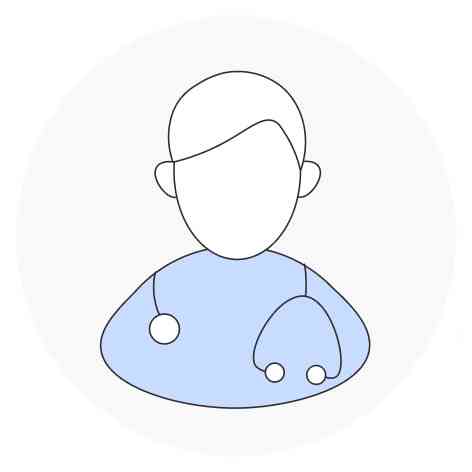Deviated Nasal Septum
Discover advanced Deviated Nasal Septum surgery solutions to relieve pain and restore comfort. Our expert team specializes in minimally invasive procedures, ensuring effective treatment for corns and related foot conditions to improve your quality of life.

30k+
Surgeries Done
50k+
Departments Treated
150k+
Conditions Treated
3k+
Specialist Doctors
200+
Cities
Deviated Nasal Septum Introduction
A deviated nasal septum is a prevalent medical condition where the thin wall between the nostrils, known as the septum, is not centered and is instead skewed to one side. This deviation occurs in approximately 80% of individuals. The asymmetry in the nasal septum can result in a range of symptoms that may necessitate medical intervention. Symptoms can include: - Difficulty breathing through one or both nostrils - Recurring sinus infections - Nosebleeds - Noisy breathing during sleep - Facial pain or pressure When left untreated, a deviated nasal septum can impact one's quality of life and overall well-being. Medical evaluation and treatment may be necessary to alleviate symptoms and improve nasal function. Treatment options can vary depending on the severity of the deviation and individual needs. It is essential to consult with a healthcare provider specializing in nasal conditions for a thorough evaluation and personalized treatment plan.
Why MediBuddy For Health Care

Enhanced Quality of Care
Constant support, a network of premium hospitals and top-tier surgeons.

End-to-End Management
Your only focus should be to go and get your procedure done. Leave the rest to us.

Continuous Guidance
Any problem you may face resolved with one phone call.

Easy financing support
We bring you the best deals, EMI options without compromising on quality
Meet Our Doctors

Dr Anup Sabarwal
ENT
25 Years

Dr Bernice Stella
ENT
30 Years

Dr Debasish Ghosh
ENT
18 Years
Diagnosis Of Deviated Nasal Septum
Diagnosis of a deviated nasal septum involves a thorough examination to determine the extent of the deviation and its impact on a person's nasal function. The following steps are typically taken to diagnose a deviated nasal septum: - Examination of nostrils using a nasal speculum: The doctor will visually inspect the nostrils using a nasal speculum to assess the internal structure of the nose. - Assessment of septum placement: The doctor will evaluate the position of the nasal septum to identify any deviation from its normal alignment. - Evaluation of impact on nostril size: By examining the nostril size and symmetry, the doctor can determine how much the deviated septum is affecting airflow through the nose. - Asking questions about sleep, snoring, sinus problems, and breathing difficulties: In addition to the physical examination, the doctor may inquire about the patient's symptoms related to sleep quality, snoring, sinus issues, and breathing problems to gather more information for an accurate diagnosis. These diagnostic procedures help healthcare providers understand the severity of the deviated nasal septum and determine the most appropriate treatment plan for the individual.
Treatment Options For Deviated Nasal Septum
The primary treatment option for a deviated nasal septum is septoplasty, a surgical procedure specifically designed to correct the deviation by realigning and repositioning the septum. Here are some key details regarding treatment options for a deviated nasal septum: - Septoplasty is the standard surgical procedure aimed at straightening the deviated septum. During this procedure, parts of the septum may be cut and removed in order to properly align it. - Septoplasty can be performed either as a standalone procedure focused solely on correcting the deviated septum, or in conjunction with rhinoplasty, which involves reshaping the external appearance of the nose. - By undergoing septoplasty, patients with a deviated nasal septum can experience improvements in breathing, reduction in nasal congestion, and potentially alleviate symptoms such as snoring and sleep apnea that may be associated with the deviation. It is essential for individuals experiencing symptoms related to a deviated septum to consult with a healthcare provider for a thorough evaluation and discussion of the most appropriate treatment options, which may include septoplasty to address the underlying issue.
Septoplasty Procedure
The Septoplasty Procedure: Anesthesia: General anesthesia is typically used, meaning you'll be asleep and pain-free. In some cases, local anesthesia with sedation might be an option. Incision: The surgeon makes an incision inside your nose, usually on one side of the septum. Reshaping the Septum: Cartilage or bone causing the blockage is repositioned or removed to straighten the septum. Closing the Incision: The lining of the nose is stitched back together to close the incision.
Recovery After Septoplasty
After undergoing septoplasty, a surgical procedure to correct a deviated nasal septum, patients can expect a structured recovery timeline to ensure optimal healing and outcomes. Here are the key points to keep in mind regarding the recovery process: - Pre-Surgery Preparations: It is advised to avoid certain painkillers before the surgery as recommended by your healthcare provider to minimize the risk of complications. - Surgery Details: The septoplasty procedure typically lasts for a duration of 30 to 120 minutes and can be performed under general or local anesthesia, depending on the individual case. - Postoperative Care: Following the surgery, patients can usually go home the same day as it is typically performed on an outpatient basis. It is essential to follow the postoperative instructions provided by your surgeon meticulously. - Return to Work: Patients can expect to return to work or normal activities after a recovery period of 7 to 10 days, but this can vary based on individual healing rates and the nature of work. - Silicone Splint Removal: The silicone splints placed in the nasal passages during the surgery are typically removed after 1 to 2 weeks postoperatively to facilitate healing and comfort. - Resuming Exercise: Patients are usually advised to refrain from strenuous physical activities for about 2 weeks after surgery to prevent any strain on the healing nasal tissues. By adhering to these recovery guidelines and closely following the instructions of your healthcare provider, you can help promote a smoother and successful recovery after septoplasty.
FAQ
What is a deviated nasal septum?
A deviated nasal septum is a medical condition where the thin wall between the nostrils is not centered and is skewed to one side, impacting nasal function and causing symptoms like difficulty breathing and recurring sinus infections.
How common is a deviated nasal septum?
What are the symptoms of a deviated nasal septum?
Terms & Conditions
Privacy Policy




